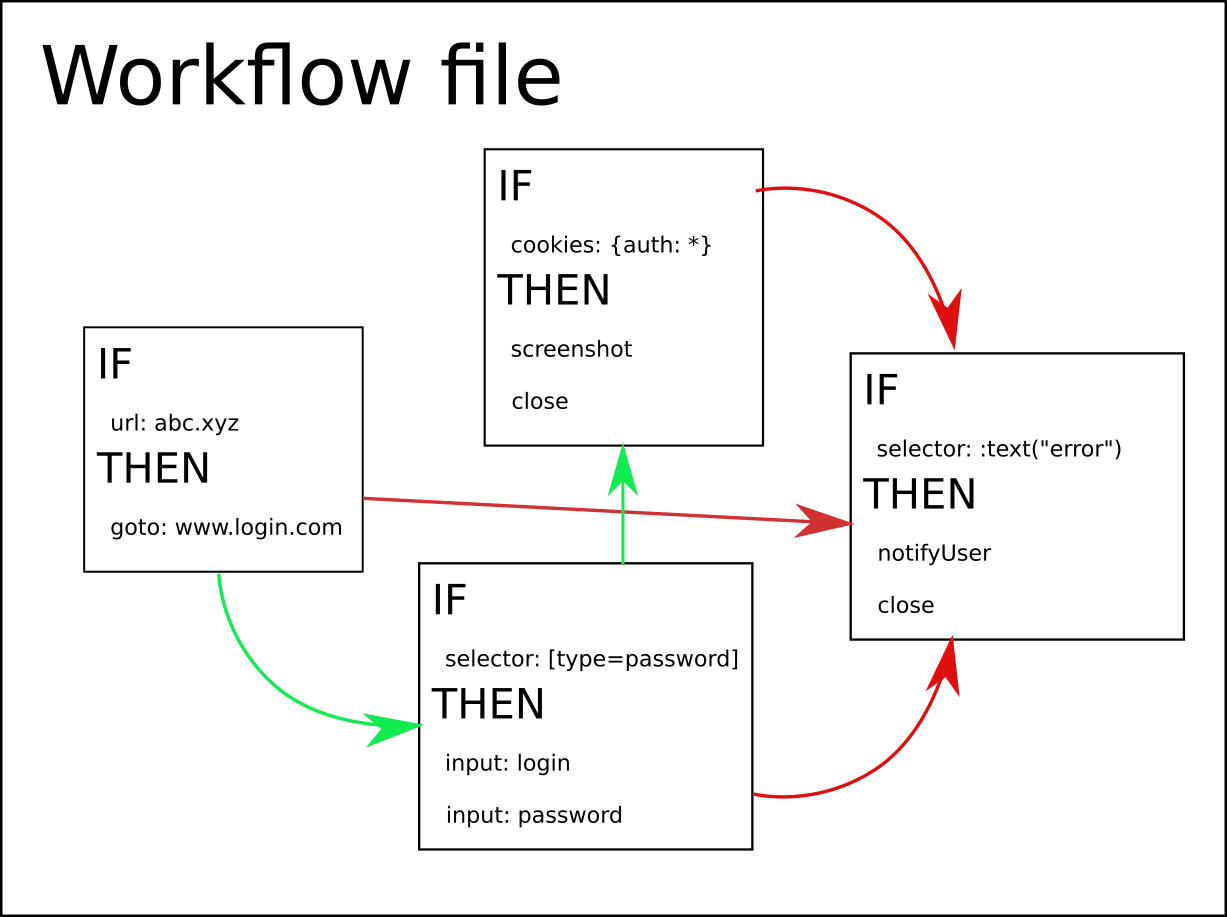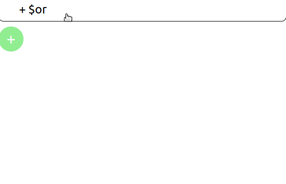Jindřich Bär
Thesis Proposal - Web Scraping Framework / Workflow Definition Format
[TLDR]: A working demo of the project, along with some (rather sparse) documentation is available in this GitHub repository.
Are you interested in the competition analysis?
Web scraping and data extraction from the Web is an ever-growing industry, valued at USD 420.84 million in 2019, expected to reach a market value of USD 948.60 million by 2026, growing at a 13.1% CAGR. (Market Research Future, November 2020)
This booming industry lacks a universal, safe format for web workflow description, as virtually all scrapers/crawlers/automations are distributed in the form of executable code as of now. This introduces a security risk while sharing those, as well as hinders the performance of the developers, who have to deal with language constructs and programming obstacles.
Workflow definition
The Web Automation Workflow format aims to serve as a declarative format for defining resilient and reusable web automations. Standardized syntax ensures machine (and human) readability, quick parsing, and simple development of third-party applications operating with the format.
From a high-level point of view, the workflow definition declares a set of action sequences with their respective conditions, not unlike pattern matching-based languages (Prolog, Haskell).

The green arrows show the intended flow of the web automation, however, the conditions allow for arbitrary order of execution (e.g. red arrows in case of an error).
In the IF clauses, the format allows for extensive usage of prepositional logic, allowing the developer to tailor the conditions to their specific use case.

The format itself is framework-agnostic, meaning it can be used with various web automation frameworks (think Playwright, Puppeteer…).
The other part of the thesis would therefore be an interpreter of this format, binding this “Condition-Response” generic format with a high-performance, safe implementation.
Workflow interpreter
When done with editing, the user can run the workflow using the interpreter - a piece of software capable of running the described workflow.
The interpreter itself should be taking care of (mainly):
- correct workflow parsing
- syntax checking
- evaluating the logic conditions in the dynamic environment of the web browser
- correct parallelism - the workflow definition works with an environment with Markov property - the same workflow definition can be used in many parallel tabs at the same time.
- implementing the actions themselves. These should include (but not be limited to) regular web automation library methods, e.g. methods of Playwright’s class
Page- The additional actions might facilitate data extraction from the web, export data from the web in a machine readable format etc.

Workflow editor
While the workflow files should be human readable, there should be a user-friendly editor allowing developers to create the workflows without having to worry about the format’s syntax.
Therefore, there should be a third part of the project - the editor. This would be a web application enabling the users to create Web Automation Workflows using a modern and simple graphical interface.
Additionally, this editor might a various number of checks to test whether the workflow is semantically correct, e.g. the conditions are not contradictory, all steps are reachable etc.
Jindřich Bär, 2022